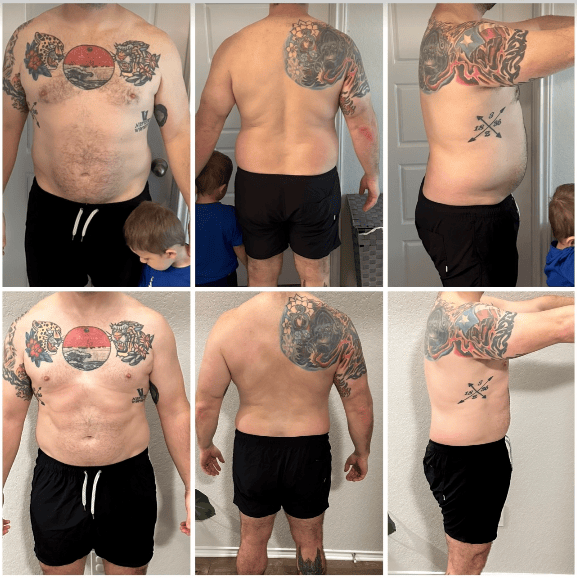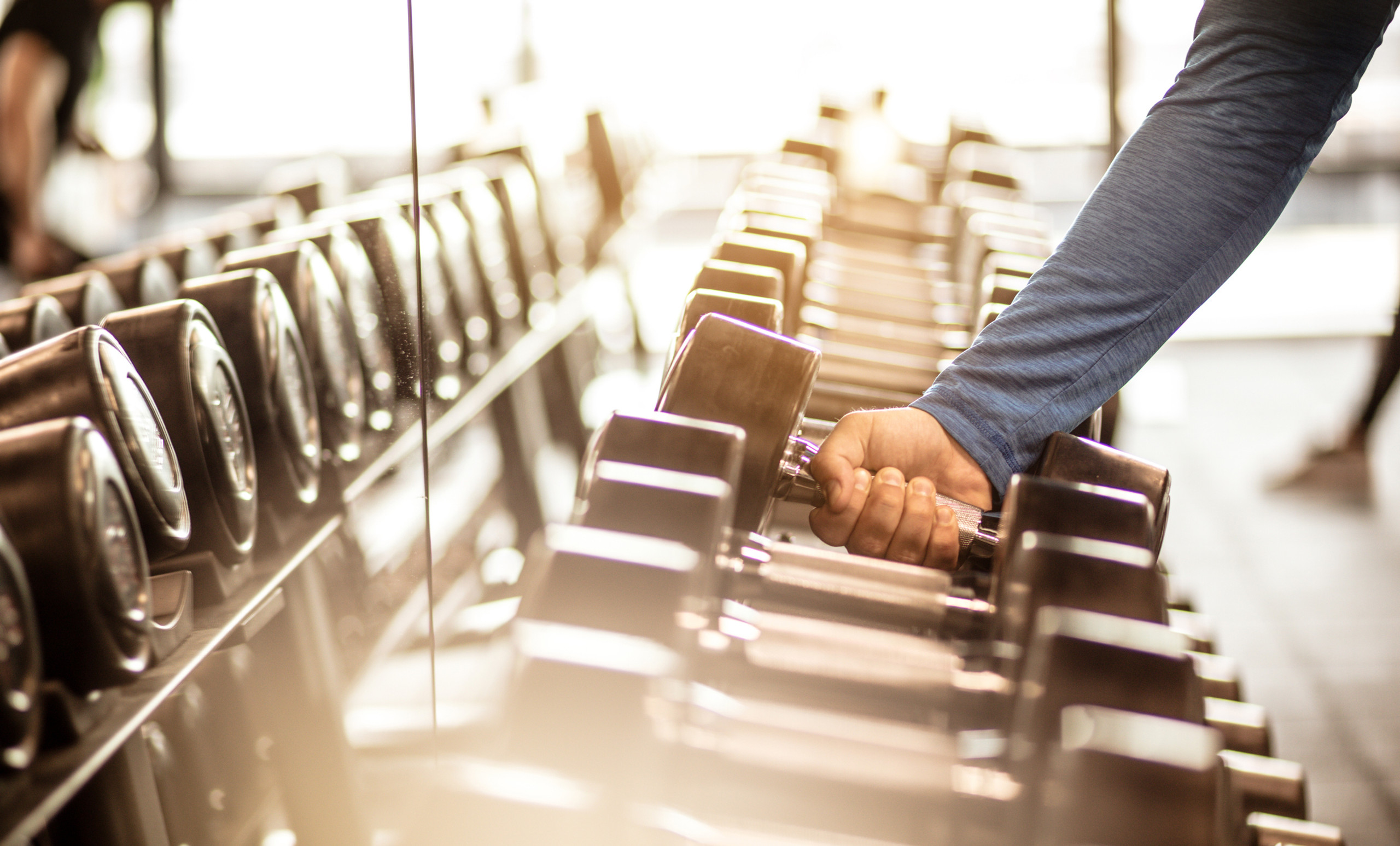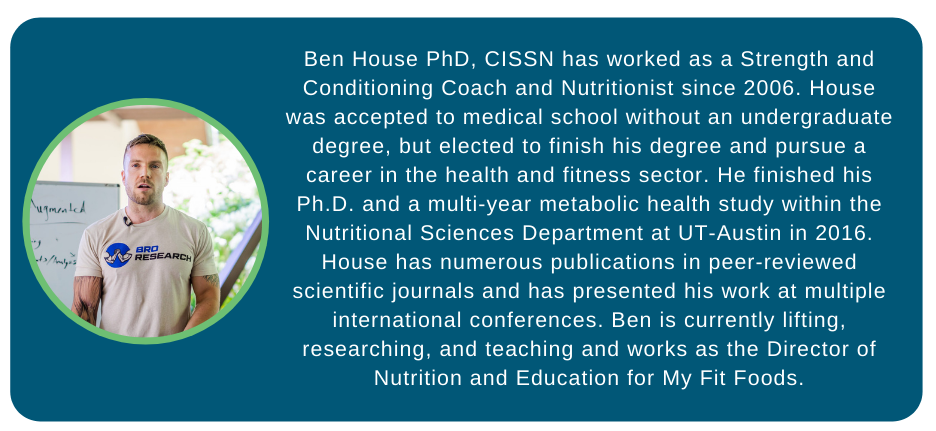If you don’t love lifting or just hate the gym I 100% get it and this article is going to give you an efficient and effective plan so you can spend as little time as possible lifting weights while maximizing the health benefits!
Once you feel like you are more effective and self-sufficient in the gym you may even start to like lifting weights a bit more.
Here’s Why I Think You Should Give Resistance Training A Shot!
Some form of resistance training is very likely worth it even if you don’t like it because without some form of muscle strengthening activity we will very likely start to lose muscle as we age.
This loss of muscle has been identified as an independent predictor of hospitalization, disability, and death and increasing physical activity by an average of just 10 minutes per day could prevent over 110,000 deaths per year in the US.
After 30, if we do not exercise we will lose an average of 3-8% of our muscle mass per decade and this accelerates to possibly more than 10% per decade after the age of 50!
With this loss of muscle comes a loss in functionality and an increase in frailty, but none of this guaranteed.
We vote with our actions today and with lifelong physical activity we are capable of preserving our muscle mass, bone density, strength, and autonomy into old age.
Just two to three days of circuit training per week coupled with sufficient protein can certainly maintain and potentially even increase muscle mass while losing body fat.
Furthermore, a fat-loss diet coupled with exercise looks to be even more effective than diet alone, and resistance training seems to be the most effective modality for preserving or gaining muscle and increasing one’s resting metabolic rate long-term.
To Get Results I Thought I Had To Live At The Gym?
The really REALLY cool thing that no one in the fitness industry wants you to know is that if you are just starting out 60% of people saw gains in lean body mass with just two to three hard sets per week!
It does look like you might get more results with more sets and time in the gym, but people performing just two to four sets per week got a whopping 66% of the results of those performing nine to eighteen sets per week.
That means they got two-thirds of the gains with potentially only ~10-40% of the work.
So if you don’t like the gym or liftng weights I would advise still trying to get at least two resistance training workouts in per week, but let’s make them as efficient and effective as possible.
For the majority of people I would start them on a general training schematic that involved two to three sets of compound lifts twice per week.
This would meet the set per week requirements for most of the major muscle groups and I think someone could easily get this done in under 45 minutes each time and likely under 30 minutes once they get in a routine. (For those who might not know what a set it is. A set is just the term for one round of an exercise. For example, if you did ten repetitions of an exercise and then waited 1 minute and did another 10 repetitions that would be two sets.)
But, Isn't Lifting Weights Dangerous?
Here is maybe the most wild thing that most people don’t expect…done well, this lower volume resistance training protocol would potentially give someone an objective risk profile of one injury every 53 to 69 years.
Thus, this type of resistance training schematic done well is likely ~75 to 150 times LESS injurious than just up and starting a running program at a frequency of two to three times a week.
Ready To Get Started?
Below is an example of this type of training protocol with minimal equipment.
Minimal Equipment (Bench, Dumbbells, and Physioball) At-Home Template
I would advice doing this workout twice per week with at least 48 to 72 hours rest between sessions
2 to 3 Rounds of 12 to 15 reps (you want the last reps to be pretty difficult) - you are aiming to go up in weight or reps every session for the first few weeks.
*You may also need a bit more rest in the first few weeks and that is fine! Remember we want this to be muscles, not cardio.
Rest ~60 sec
Rest ~60 sec
Goblet Squat (Can use a DB instead of a Kettlebell)
Rest ~60 sec
Rest ~60 sec
Rest ~60 sec
Repeat for 2 to 3 rounds
Could you do this workout with no equipment?
HERE is my answer.
If you are looking for more extensive and advanced libraries of exercise demonstrations below are some of my favorite resources in no particular order:
Physique Development and the Science of Strength Training
#GIVEAFIT
REFERENCES:
1. Mitchell, W.K., et al., Sarcopenia, dynapenia, and the impact of advancing age on human skeletal muscle size and strength; a quantitative review. Front Physiol, 2012. 3: p. 260.
2. Saint-Maurice, P.F., et al., Estimated Number of Deaths Prevented Through Increased Physical Activity Among US Adults. JAMA Intern Med, 2022.
3. Volpi, E., R. Nazemi, and S. Fujita, Muscle tissue changes with aging. Curr Opin Clin Nutr Metab Care, 2004. 7(4): p. 405-10.
4. Wroblewski, A.P., et al., Chronic exercise preserves lean muscle mass in masters athletes. Phys Sportsmed, 2011. 39(3): p. 172-8.
5. Mero, A.A., et al., Moderate energy restriction with high protein diet results in healthier outcome in women. J Int Soc Sports Nutr, 2010. 7(1): p. 4.
6. Longland, T.M., et al., Higher compared with lower dietary protein during an energy deficit combined with intense exercise promotes greater lean mass gain and fat mass loss: a randomized trial. Am J Clin Nutr, 2016. 103(3): p. 738-46.
7. Borges, J.H., et al., Exercise training and/or diet on reduction of intra-abdominal adipose tissue and risk factors for cardiovascular disease. Eur J Clin Nutr, 2019. 73(7): p. 1063-1068.
8. Johns, D.J., et al., Diet or exercise interventions vs combined behavioral weight management programs: a systematic review and meta-analysis of direct comparisons. J Acad Nutr Diet, 2014. 114(10): p. 1557-68.
9. Foster-Schubert, K.E., et al., Effect of diet and exercise, alone or combined, on weight and body composition in overweight-to-obese postmenopausal women. Obesity (Silver Spring), 2012. 20(8): p. 1628-38.
10. Clark, J.E., Diet, exercise or diet with exercise: comparing the effectiveness of treatment options for weight-loss and changes in fitness for adults (18-65 years old) who are overfat, or obese; systematic review and meta-analysis. J Diabetes Metab Disord, 2015. 14: p. 31.
11. Kirk, E.P., et al., Minimal resistance training improves daily energy expenditure and fat oxidation. Med Sci Sports Exerc, 2009. 41(5): p. 1122-9.
12. Aristizabal, J.C., et al., Effect of resistance training on resting metabolic rate and its estimation by a dual-energy X-ray absorptiometry metabolic map. Eur J Clin Nutr, 2015. 69(7): p. 831-6.
13. MacKenzie-Shalders, K., et al., The effect of exercise interventions on resting metabolic rate: A systematic review and meta-analysis. J Sports Sci, 2020. 38(14): p. 1635-1649.
14. Erik A. Willis, L.T.P., Jeffery J. Honas, Joseph E. Donnelly, Richard A. Washburn Factors Associated with Inter-Individual Variability in the Fat-Free Mass Response to Resistance Training. in American College of Sports Medicine. 2016.
15. Washburn, R.A., et al., One set resistance training: effect on body composition in overweight young adults. J Sports Med Phys Fitness, 2012. 52(3): p. 273-9.
16. Schoenfeld, B.J., D. Ogborn, and J.W. Krieger, Dose-response relationship between weekly resistance training volume and increases in muscle mass: A systematic review and meta-analysis. J Sports Sci, 2016: p. 1-10.
17. Keogh, J.W. and P.W. Winwood, The Epidemiology of Injuries Across the Weight-Training Sports. Sports Med, 2017. 47(3): p. 479-501.
18. Videbaek, S., et al., Incidence of Running-Related Injuries Per 1000 h of running in Different Types of Runners: A Systematic Review and Meta-Analysis. Sports Med, 2015. 45(7): p. 1017-26.
About Author: Mario Mendias






